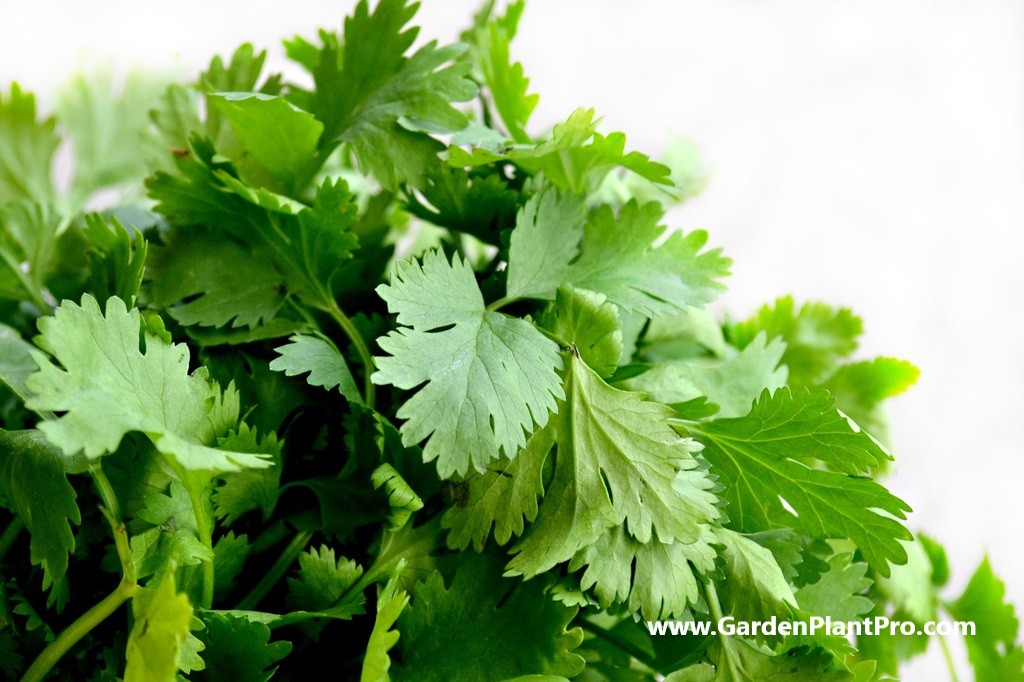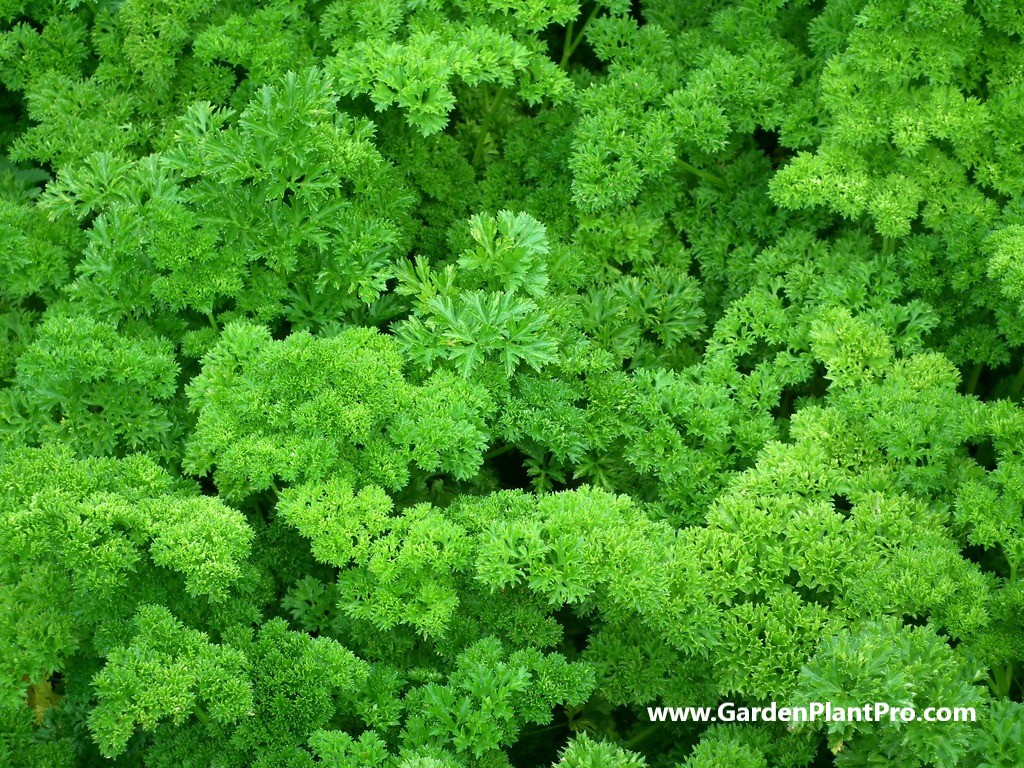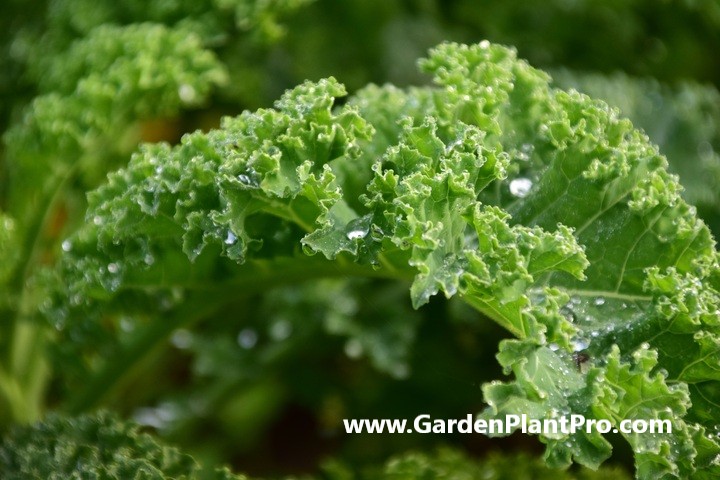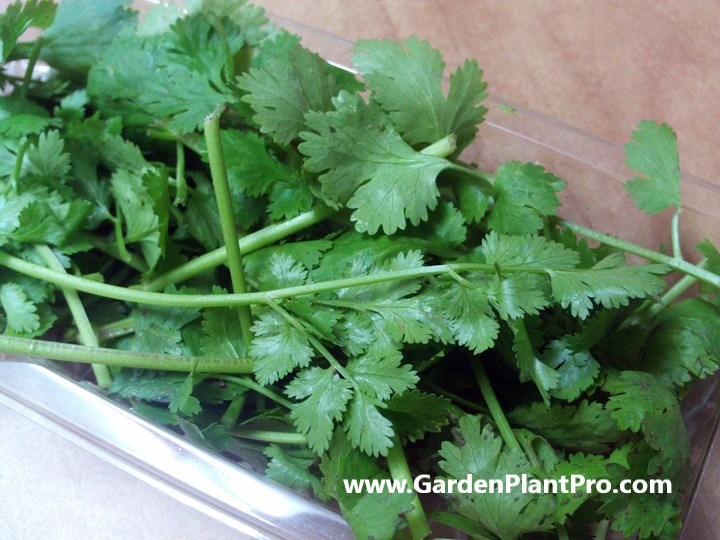Growing parsley in your own food garden is rewarding. Not only is parsley a tasty herb that adds depth to a variety of recipes, but it also has a number of health advantages, including being high in vitamins A and C. Growing parsley is a terrific way to improve your cooking abilities while also enjoying fresh, local vegetables, whether you’re a seasoned gardener or just getting started.
Fortunately parsley is a robust and hardy herb that can be growing in a number of climates and is an ideal addition to the other various herbs you plan to grow. In this guide we’ll walk you through the steps of planting, caring for, and harvesting parsley in your own vegetable garden so you can enjoy the tastes and benefits of this versatile herb all year.
A Brief History
Parsley is an ancient herb that has been used for centuries for both culinary and medicinal purposes. It is believed to have originated in the Mediterranean region and was first cultivated in Greece. It was later introduced to other parts of Europe and eventually to the Americas.
The ancient Greeks and Romans were known to use parsley in many of their dishes as well as for medicinal purposes. It was believed to have a variety of health benefits, including the ability to reduce fever, improve digestion, and even treat certain illnesses.
In more recent times, parsley has become a popular ingredient in many dishes around the world. It’s often used as a garnish or added to salads, soups, stews, sauces, and other dishes. It is also used as a flavoring in some alcoholic beverages.
Parsley is easy to grow and can be planted indoors or outdoors. For best results, it should be planted in well-drained soil that is rich in organic matter. It can also be started from seeds or seedlings and should be placed 30cm apart when planting directly into the garden. Once established, parsley plants need regular watering and fertilizing for optimal growth and health.
Nutritional Benefits
Parsley, a member of the Apiaceae family, is highly nutritious and provides many health benefits.
It is rich in vitamins A, K and C as well as folate, all of which are essential for maintaining good health. Parsley also contains antioxidants that protect cells from damage caused by free radicals and reduce inflammation. Studies have shown that parsley can help improve blood sugar levels, support heart, kidney and bone health, and may even help protect against certain types of cancer.
In addition to its nutritional benefits, parsley is also a natural diuretic and can help to clear toxins from the body. It can also act as an appetite stimulant, helping to promote digestion and reduce bloating and gas. This makes it a great addition to meals or smoothies if you’re looking to lose weight.
When growing parsley in the garden, it’s important to choose a suitable location that gets plenty of sun and has well-drained soil that is rich in organic matter. Parsley prefers cooler weather and should be planted in early spring or late summer when temperatures are milder. Direct seeding is the easiest way to start parsley, but you can also purchase seedlings from your local garden center or online.

Common Varieties & Their Uses
When it comes to growing parsley, there are many varieties available. Each type of parsley has its own unique flavor and uses. Common varieties of parsley include the following:
• Curly Parsley: This is the most common type of parsley found in grocery stores and on restaurant tables. It has a mild flavor and is often used as a garnish.
• Italian Parsley: This variety is also known as flat-leaf parsley and has a stronger, more distinct flavor than curly parsley. It’s often used in salads, soups, and sauces.
• Hamburg Parsley: This variety is also known as turnip-rooted parsley and has a mild flavor similar to that of celery. It’s often used in soups, stews, and vegetable dishes.
• Greek Parsley: This variety is also known as the wild type of parsley and has a very strong flavor. It’s often used to season meats, vegetables, and sauces.
When To Sow
When it comes to planting parsley, timing is everything.
Parsley is a biennial, meaning it needs two years to complete its life cycle. In the first year, the plant will produce foliage and in the second year, it will produce flowers and seeds. To ensure good growth and production of foliage, it is important to sow parsley when the conditions are right.
Parsley prefers cool weather and can be planted in both spring and late winter or early fall. When planting in the spring, it is best to sow seeds directly into the garden soil after all danger of frost has passed. In areas with mild winters, parsley can be planted in early autumn for a winter harvest. Parsley seeds will germinate in temperatures between 50-85°F (10-30°C).
It is best to sow parsley seeds about ½ inch (1 cm) deep and 4 inches (10 cm) apart in rows that are 18-24 inches (45-60 cm) apart. Thin out seedlings to about 9 inches (23 cm) apart for larger plants. Depending on the variety and growing conditions, it can take anywhere from 2 to 5 weeks for seedlings to emerge from the soil.
Once established, parsley will continue to grow throughout the season until cold weather sets in. For an extended harvest of leaves, succession plantings should be done every 4–6 weeks throughout the season. This will ensure that fresh foliage is always available for harvesting.
DIY PROJECT: Collect rainwater no matter where you live...
This DIY project is the best way to legally collect rainwater NO MATTER where you live. Get chlorine-free water, cut down on your water bills, and have enough for an emergency situation or to water your garden. Read More Here...
Choosing A Suitable Location In The Garden
Once you’ve decided on the variety of parsley you’d like to grow, the next step is to choose a suitable location in the garden. Parsley is a hardy perennial, so it will return year after year.
It prefers full sun or partial shade and well-draining soil, so avoid areas that are prone to flooding or standing water. If you live in an area with hot summers, look for a spot with some afternoon shade to protect the plants from burning.
Take a moment to think about how much space your parsley plants will need. Different varieties vary in size, so be sure to account for this when choosing a spot in the garden. Planting too close together can cause overcrowding, resulting in stunted growth and reduced yields.
In winter, or if you don’t have access to an outdoor garden space, parsley can also be grown indoors on a sunny windowsill. Choose a spot that is close to your kitchen for easy access when cooking with this versatile herb.
Preparing The Soil
Preparing the soil is an important step in growing parsley. Before you sow the seeds or plant the seedlings, it is a good idea to make sure that the soil is ready and suitable for planting.
To prepare the soil, start by digging a hole twice the depth and width of the plants. This will help ensure that the roots have plenty of room to grow and spread out. If you’re using starter pots or trays, fill them with seed raising for optimal growth.
Once you’ve made sure that your hole or pot is ready, it’s time to add some fertilizer. A slow-release all round general fertilizer will help ensure that your plants have all the nutrients they need throughout their life cycle.
The last step in preparing your soil is to water it well. Make sure that you water your parsley thoroughly before sowing your seeds or planting your seedlings. This will help ensure that the roots are able to take up all of the nutrients from the soil and establish themselves properly.
By following these steps, you can be sure that your parsley plants will have a strong foundation in order to grow and flourish in your garden.
Planting The Seeds Or Seedlings
Once you have chosen a suitable location, prepared the soil and acquired your parsley seeds or seedlings, it is time to start planting.
If you are using seeds, they should be soaked in water for 12-24 hours before sowing. This will help to speed up the germination process. Sow the seeds thinly in 1cm (½in) deep drills and cover with soil. The seeds should be sown from early spring to early summer when the soil has warmed up sufficiently.
If you are using seedlings, ensure that the soil temperature is warm enough before transplanting. Dig a hole that is deep enough for the roots of the seedling and wide enough for them to spread out. Gently remove the seedling from its container and place it in the hole. Cover with soil and lightly press down to make sure there are no air pockets.
Once planted, water lightly but regularly until the seedlings have established themselves. Feed with an organic balanced fertilizer to promote healthy growth. Keep an eye out for weeds and remove them as they appear to prevent them from competing with your parsley plants for nutrients and water.
Caring For The Seedlings
Once the seeds have been sown, it’s important to take good care of the seedlings to ensure that they grow into healthy and productive plants. Caring for parsley seedlings involves providing adequate water, light, and nutrients.
Watering should be done on a regular basis, making sure that the soil is kept moist but not too wet. To prevent root rot, it’s best to water the seedlings in the morning so that any excess moisture has time to evaporate during the day. Fertilizing should be done every two weeks with a balanced liquid fertilizer.
Parsley needs plenty of light, so make sure to choose a location in the garden that receives at least six hours of direct sunlight each day. If necessary, thin the seedlings out once they reach at least three inches tall. This will help ensure that the plants receive enough sunlight and air circulation.
When caring for parsley in a container garden, it’s especially important to keep an eye on soil moisture levels and fertilize regularly. In this case, water when the top inch or two of soil feels dry to the touch, and use a liquid fertilizer every two weeks during the growing season.
Do you have some charcoal in your house right now? We call charcoal a “miracle leftover” for anyone who wants to be a little more self-sufficient and cut costs. That’s because it can help you with so many different things around the house and garden. You can even use it to make an energy-free fridge. Read More Here...
Finally, keep an eye out for common pests such as aphids and slugs, as well as common diseases such as powdery mildew and root rot. If you notice any signs of infestation or disease, take steps to address it right away before it spreads to other plants in the garden.

When & How To Harvest
Harvesting parsley is an important part of growing this versatile herb.
The best time to start harvesting is after the plant has had 70-90 days of growth and ample foliage. Generally, it is recommended to regularly pick a few leaves instead of an occasional large harvest as this will keep the plants producing through the summer months, when they can be harvested.
When it comes to harvesting, you can simply pinch off a few leaves as you need them, or cut the entire stem near the base with a pair of scissors. Make sure to bring the sprigs indoors as soon as possible to stop them from wilting in the sun. To store parsley for longer periods of time, it can be chopped and kept in airtight containers in the fridge or freezer.
It is important to note that all harvesting techniques should be done carefully and with respect for the plant itself so that it can continue to provide fresh herbs over time.
After harvesting, it is also wise to check the plants for any common diseases or pests, such as aphids or powdery mildew, and take appropriate action if necessary. With proper care, your parsley crop should continue to produce delicious herbs for many months to come.
Storing & Preserving
Fresh parsley storage is straightforward and may be accomplished in a variety of ways. If you’ve just harvested your parsley, the first thing you should do is remove any wilted or discoloured leaves and give it a nice washing in cold water. After washing the parsley, wipe it dry carefully with paper towels or a clean kitchen towel.
Store In Water
Fresh parsley may be stored in a vase or container with water in the same manner as cut flowers are. Depending on how fresh the parsley was when you gathered it, this approach can keep it fresh for up to a week. Trim the ends of the stems and set them in a jar or vase filled with cold water to keep parsley this way. Refrigerate the parsley after loosely wrapping it in a plastic bag.
Refrigerate
Wrapping fresh parsley in moist paper towels and storing it in a plastic bag in the refrigerator is another option. This approach can retain fresh parsley for up to two weeks. Wrap the parsley in moist paper towels and place it in a plastic bag to accomplish this. Close the bag and place it in your refrigerator’s crisper drawer.
Freezing
If you have more parsley than you can use in a few weeks, freezing it is an excellent way to save it for later use. Wash and slice the parsley into little pieces before freezing it. Next, lay the chopped parsley on a baking sheet and store it in the freezer until frozen. After frozen, move the parsley to a freezer-safe container or plastic bag that has been labelled and dated, and keep it in the freezer for up to six months.
Drying
Drying parsley is another technique for keeping it. Drying parsley is a quick and easy technique to keep it fresh for months. Wash and dry the parsley leaves before removing any stems. String the parsley stems together and hang them upside down in a cold, dry spot, such as a pantry or garage. Avoid hanging them in direct sunlight or in a damp atmosphere, since this might lead the parsley to deteriorate.
The parsley should be dry and brittle after a few weeks. When the leaves have dried, separate them from the stems and store them in an airtight container, such as a glass jar with a tight-fitting lid. Keep the container cool and dry, away from direct sunlight. If properly preserved, dried parsley can last for up to a year.
Proper storage and preservation methods will help you enjoy the vibrant, fresh flavor of parsley long after harvest, whether you store it in a vase with water, wrap it in moist paper towels, freeze it, or dry it. With these strategies, you can maximize your parsley crop and enjoy its great flavor and health benefits all year.

Common Diseases & How To Control Them
Parsley is a hardy herb, but it can still be affected by common diseases. Common issues include root rot, powdery mildew, downy mildew, aphids and spider mites. To prevent these issues, proper site control and cultivation is important.
Root Rot
Root rot is caused by fungi in the soil and can be identified by wilting or yellowing leaves. To prevent root rot, keep the soil well drained and avoid over-watering. If your parsley plant is affected by root rot, you can try to save it by removing affected roots and replanting in fresh soil.
Powdery & Downy Mildew
These two fungal diseases are often seen together on parsley plants, usually when the weather is humid and warm. The leaves will be covered in a powdery or downy white film which can eventually kill the plant if left untreated. To prevent mildew from forming, avoid overcrowding plants, ensure good air circulation and make sure the soil drains well. If mildew appears on your parsley plant, it should be treated with an appropriate fungicide as soon as possible.
Common Pests & How To Control Them
Parsley is a popular herb that is grown in many gardens, but it can be vulnerable to a number of common pests. Identifying and controlling these pests is essential for keeping your parsley plants healthy and productive.
CASE STUDY: We've been living off the grid for the last 40 years...
In all that time an electric wire has never been connected to our house. We haven’t gotten or paid an electricity bill in over 40 years, but we have all the electricity we want. We grow everything we need, here, in our small backyard. We also have a small medicinal garden for tough times. Read More Here...
Aphids
Aphids are a common pest that can attack parsley plants. They are small, soft-bodied insects that can be found in large numbers on the undersides of leaves. To control aphids, spray your parsley plants with a homemade garlic water solution every 7 days until the population has been reduced.
Spider Mites
These tiny spiders attack parsley plants by sucking out the sap from their leaves. They can be identified by their webs which are often found on the undersides of leaves. To reduce the risk of spider mites attacking your parsley plants, keep them well-watered and free from
Leafminers
Leafminers are another type of insect that can cause damage to parsley plants. They are small larvae that feed on the leaves of the plant and create winding tunnels as they go, leaving behind yellow spots and distorted foliage. To control leafminers, apply an insecticidal soap or neem oil solution to the affected areas of the plant.
Caterpillars
Caterpillars can also be destructive to parsley plants, particularly if they feed on new growth. They will strip whole leaves or just parts of them, leaving behind bare stems and shredded foliage. To control caterpillars, use a natural insecticide like pyrethrin or spinosad to kill them on contact.
Slugs and Snails
Finally, slugs and snails can cause damage to parsley plants by feeding on the leaves and stems. To control these pests, set up barriers around your plants such as beer traps or diatomaceous earth which will help keep them away from your parsley plants.
Beneficial Companion Plants
When planning to grow parsley in your garden, you should also consider companion planting. Companion planting is the practice of planting different species of plants together, which can provide natural pest control, increased pollination, and other benefits. Parsley can be beneficial to many other plants, particularly herbs, when planted together.
Basil and parsley can be a great combination to plant in your garden. They both have similar light and water requirements, and they are not in the same botanical family. This combination also works well if you are looking to attract beneficial insects, such as ladybugs, that can help with pest control.
Rosemary and parsley make another great combination for companion planting. Rosemary provides a strong aroma that can help repel certain pests from the garden. It will also grow taller than the parsley, providing some protection from the elements for the more delicate herb.
Sage and parsley are also a good match for companion planting. Sage has a strong scent that can help keep certain insects away from your garden. It is also very drought tolerant and won’t compete with the parsley for water or nutrients in the soil.
Additionally, oregano and parsley make a great combination when planted together as well. Oregano has an earthy flavor that pairs well with the more subtle flavor of parsley. In addition to its flavor benefits, oregano helps attract pollinators to your garden which can help increase yields of other vegetables you may be growing nearby.
It is important to note that not all herbs will work well together when companion planted with parsley in your garden. Some herbs such as dill should not be planted near parsley, as they are both in the same botanical family and tend to compete for nutrients in the soil.
By carefully selecting companion plants for your parsley crop, you can reap many benefits from this simple practice – such as natural pest control, improved soil health, and increased yields.

Using Your Parsley
Parsley is a versatile herb that can be used in a variety of dishes.
When harvesting parsley, it is important to remember to only pick the leaves and not the stems. The leaves should also be harvested when they are young and tender. This will ensure that the flavor of the parsley is at its best.
Fresh parsley is an excellent way to add taste and nutrients to your dishes. Parsley is a versatile herb that may be used in a wide range of foods, including soups, stews, salads, and marinades.
To use fresh parsley, first wash and thoroughly dry the leaves. Next, finely chop the parsley and sprinkle it on top of the final meal as a garnish or add it at the end of cooking. You may also prepare a tasty herb butter or pesto with whole parsley leaves.
Parsley may be used to produce a pleasant and nutritious tea in addition to cooking. Just chop a handful of fresh parsley leaves and add them to a cup of boiling water to make parsley tea. Let the mixture to soak for a few minutes before straining and serving. Parsley tea might help to increase your immune system and improve your general health.
If you have extra parsley that you can’t use right away, consider drying or freezing it for later use. Dried parsley may be added to soups, stews, and marinades, whilst frozen parsley can be substituted for fresh parsley in any meal that calls for fresh parsley.
Overall, parsley is a tasty and healthy herb that may enhance the flavor and health benefits of your dishes. You can reap the various advantages of parsley by adding it into your cuisine and experimenting with new ways to use it.




